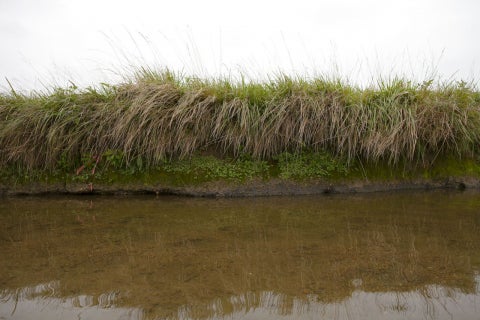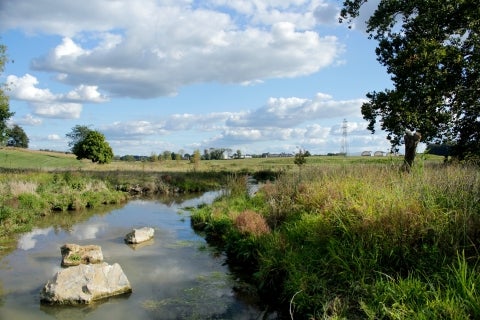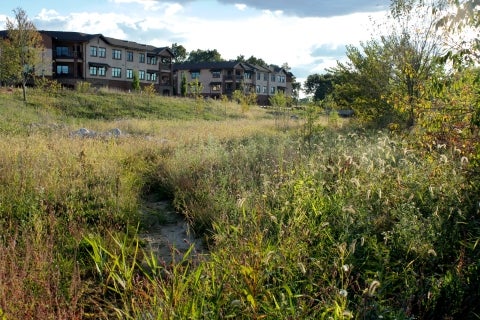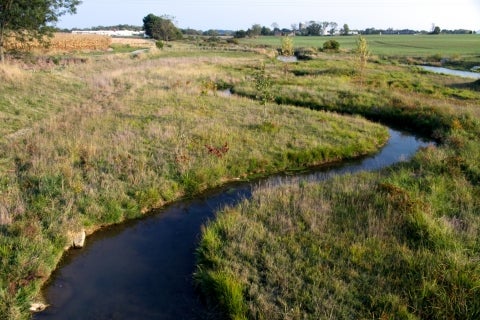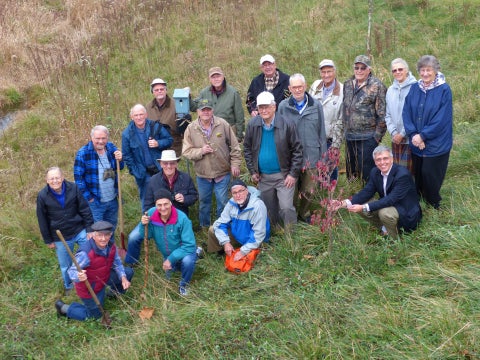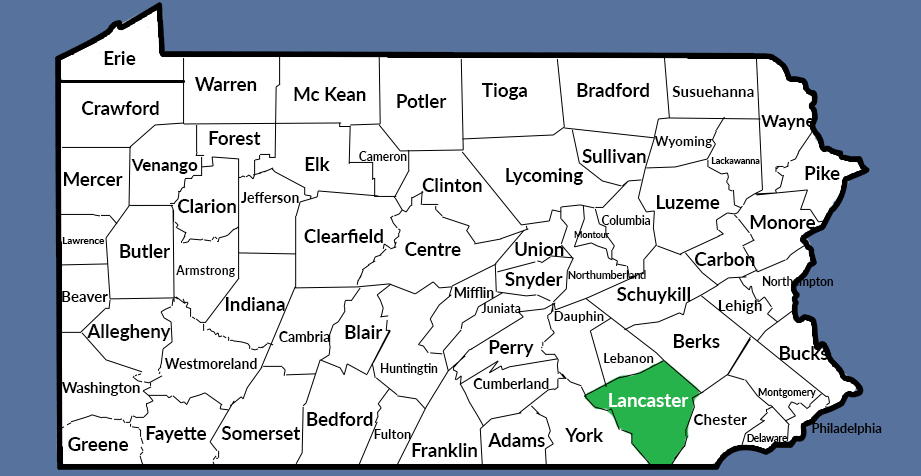Landis Homes Stream and Floodplain Restoration

Parts of the Chesapeake Bay watershed contain a high percentage of impervious cover – paved or other hard surfaces such as roofs and roadways that prevent rain water from being absorbed into the ground. Instead, water runs along these surfaces, collecting trash and substances such as motor oil, lawn fertilizers, and pesticides. This polluted stormwater flows into streams and rivers, where it threatens aquatic ecosystems and public health.
Effective stormwater management, on the other hand, creates safe paths for polluted runoff to be captured and filtered through the ground before it reaches waterways. This helps keep the environment clean and our communities healthy!
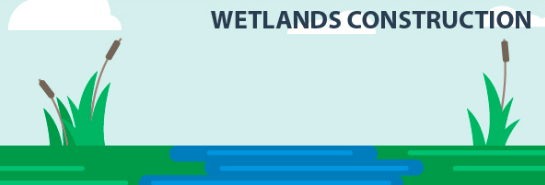
Project location: Lititz, PA
Problem: Kurtz Run, a tributary to the Conestoga River that flows through the Landis Homes retirement community, was showing clear signs of degradation. In addition to improving stream function, Landis Homes wanted to improve the bio-diversity and development efficiency of the site. Since the 800 acres of protected farmland surrounding the site made acquiring additional acreage an unrealistic option, Landis Homes worked with LandStudies, Inc. to develop a stream and floodplain restoration project to provide multiple environmental, community, and economic benefits.
Solution: The floodplain restoration project removed approximately 27,500 cubic yards of legacy sediment from the floodplain and increased the site’s floodwater storage potential. As a result, two stormwater basins were removed to allow for additional buildable acreage. Stream bank stabilization reduced erosion, and wetland construction increased runoff absorption and filtration to improve local water quality. The floodplain restoration, planted with colorful native vegetation, attracts wildlife and provides an aesthetic benefit for residents who use the trail for exercise and nature study.
Monitoring: To monitor the project’s impact on local water quality, continuous flow and temperature monitoring equipment was installed prior to the restoration. Base flow water quality data was collected on site at in-stream sampling locations and stormwater outfall locations. LandStudies monitored and maintained the site for five years (through 2017).
Economic benefits: Floodplain restoration allowed buildable land to be used more efficiently. Two stormwater management basins were removed and eleven additional living cottages were constructed in their place. A cost-benefit analysis, focused on the economic benefits of building the additional units, found nearly $3 million more in returns, as compared to a conventional approach to stormwater management.
Community engagement: Residents formed a “Friends of the Woods and Wetlands” group who inventory and care for the native plants and natural ecosystem created by the restoration. Residents have introduced a bee colony and other native wildlife to the wetlands. The walking trail that runs through the site is used by the residents for exercise, education and local tours.
Scale: 7 acres of wetlands created; 2,600 linear feet of stream restored; 8 acres of native ecosystem restoration and improved bio-diversity; 25,000 native herbaceous plugs and over 700 trees and shrubs planted
Pollutants Removed: 800 lbs/yr nitrogen, 130 lbs/yr phosphorus, and 75 tons/yr sediment
Cost: $771,199.55 (Design & Permitting: $168,100.55; Permit Coordination: $45,115.79; Construction: $603,000.00)
Funding Sources: Privately funded by Landis Homes Retirement Community
Partners: Landis Homes, RGS Associates, Inc.
Contact: Kelly Gutshall, RLA; President, Landscape Architecture, LandStudies, Inc.; kelly@landstudies.com; 717.627.4440; www.LandStudies.com

